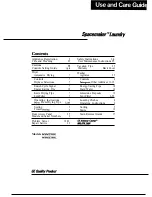
Step 4.
When tiling commences you should
start at point ‘X’, so check that the lines you
have marked make a perfect right angle and
the side line runs parallel to the centre line.
Grout joints
The width of grout joints will vary between
3–12mm. Large joints will be necessary on
rustic tiles such as terracotta and slate.
Please refer to the Fired Earth price list for
recommended grout joints.
Roman Mosaic tiles should be butt jointed
(no allowance made for a grout joint)
except when used in a shower where a
narrow but impervious grout joint will
be necessary.
When fitting random sized tiles an area
should be 'dry laid' first to establish the
optimum joint width. Joint sizes may vary
from 2mm-10mm across the floor
depending on the mixture of tile sizes
used and the pattern.
Mosaic tiles -
Ensure that the sheets of
mosaic tiles are spaced so that once
grouted, no individual sheets can be
distinguished.
Particular care is required when blending
individual sheets of mosaics, to ensure a
subtle blend of colour is achieved.
Damp Tiles
Damp tiles should be stored on end in a
well ventilated area to dry thoroughly
before fixing. This may particularly apply
to Natural Stone, Lubelska Brick and
Reclaimed Terracotta and Encaustic tiles.
In general, the following weights apply to
the list of substrates, provided they are fixed
correctly and sound and stable;
Plaster - 20 kg/m
2
: Plasterboard - 32 kg/m
2
Brick/block/render - 40 kg/m
2
+
Tile Backer board/wbp plywood - 40 kg/m
2
+
7
6
Planning
Take the time to study the room and plan
your work. Tiling usually commences in the
corner furthest from the door. If there is
more than one door, it will be necessary to
decide which is the primary entrance.
Consider how cuts will look against fixed
furniture etc. and through doorways.
Adjustments may be required to achieve
the best results.
Please note: Where tiles have variable depths
e.g. Reclaimed Terracotta the thickest tile
including the adhesive should be taken as the
approximate floor height increase.
Step 1.
Mark the centre line of the room
from the wall of the primary entrance to the
far end. You will need to measure and mark
the midpoints of walls A to B and C to D.
Join these two points with a taught chalk
line and mark.
Step 2.
Mark the midpoint of the room by
measuring the centre of the line. From this
point, lay down tiles (without fixing them)
alongside the centre line, allowing for joints,
to see where the last whole tile will end.
Mark (with string or chalk) a line 1 to 2 at a
right angle alongside this last whole tile.
Step 3.
Locate starting point ‘X’ by laying
down tiles along the new line 1 to 2 in the
same way as before, to see where the last
whole tile will end. Now mark your side line
3 to 4 at a right angle alongside this last
whole tile.
Fixing
Before commencing tiling please ensure
you are familiar with the important notes
on page 3.
It is important to establish which way the
tiles are to be laid before any tiling is
started. Make sure the person fitting the
tiles knows what the tiles should look like.
‘Shuffle’ the batch to ensure that any
colour and tonal variations are well mixed.
Minor chips and blemishes should be
expected and are best used for cuts or well
mixed into the floor.
Some of our tiles vary considerably in depth.
Where this is applicable, it is important to
grade the tiles before installation.
Some of our tiles require careful sealing
prior to installation. (See page 9 onwards)
Be certain that the tiles are suitable for the
application.
midpoint
centre line
A
B
C
D
4
3
X
first tile position
1
2























